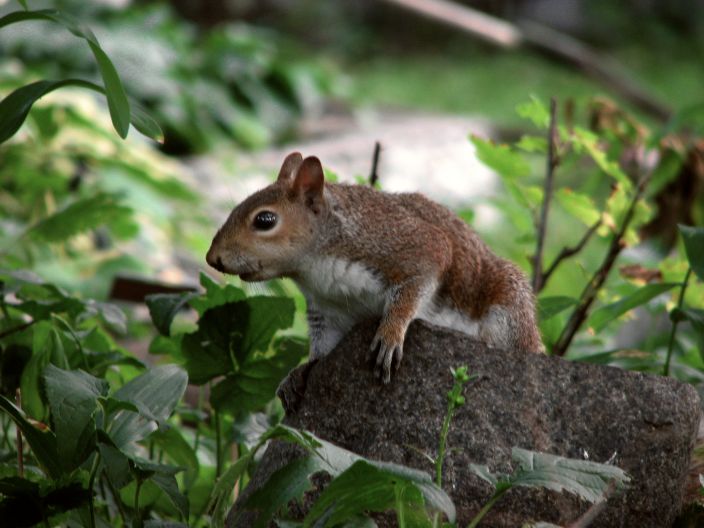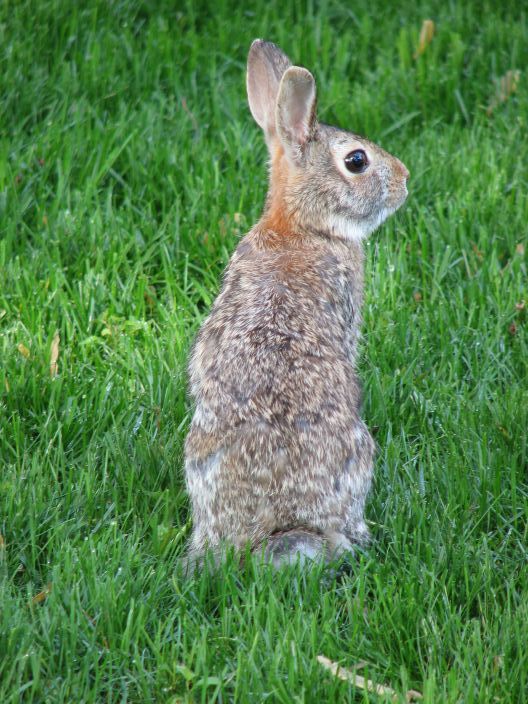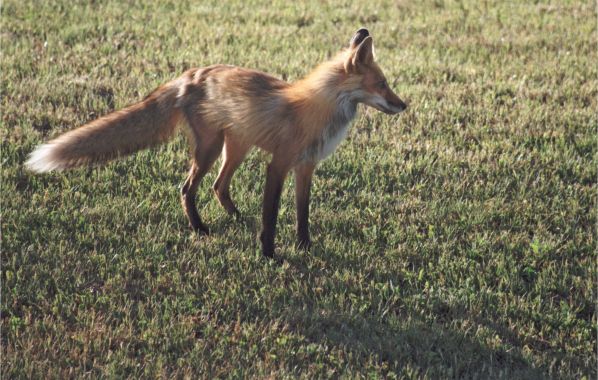|
Many of us here at Coffman are photographers, or wildlife watchers. Below you will find a collection of favorite photos of wildlife visitors and plant life residents to our grounds! Our native plantings and shade garden make cozy homes for lots of critters, and are an especially rare and treasured part of our landscape, here. Read more about landscaping for wildlife. The US Forestry Service also shares tips on landscaping for wildlife.
Creating a wildlife garden reverses habitat destruction resulting from cities, pollution, or other human caused changes that are hurting wildlife. A wildlife garden might include: Food: Native plants are especially suited to the local fauna. Animals, birds, bugs, etc. all need food: nectar, seeds, nuts, fruits, berries, foliage, pollen, and insects. Water: All animals need water to survive and some need it for bathing or breeding as well. Cover: Shelter is a primary need for all of us. Shelter from bad weather as well as places to hide from predators -- or places to hide while stalking prey. Prairie gardens, woodland gardens, and rain gardens are three separate types of habitat, providing varying cover and resources, each for a different range of wildlife. Places to Raise Young: Some wildlife have totally different habitat needs in their juvenile phase than they do as adults. All wildlife need safe and reliable resources to reproduce and raise young. Sustainable Practices: How you manage your garden can have an effect on the health of the soil, air, water, and habitat for native wildlife as well as the human community. |
|
|
Butterflies
American Painted Lady
Black Swallowtail Cabbage White Eastern Comma Eastern Tailed Blue Monarch Northern/Pearl Crescent Red Admiral Summer Azure Tiger Swallowtail |
Does anyone have pictures of . . .
Reptiles
|
Moths
|
Send Cathy photos of local flora & fauna at 1666 Coffman! |
These are the birds we've see on our property and in our gardens
Birds
American Crow
American Goldfinch American Redstart American Robin Bald Eagle Black-capped Chickadee Blue Jay Brown Thrasher Cedar Waxwing Common Yellowthroat Cooper’s Hawk Dark-eyed Junco Downy Woodpecker Eastern Phoebe Eastern Towhee European Starling |
|
Native Plants
We have planned and planted several native plant gardens. The lists below show the actual plantings in our Prairie Meadow, Wetland Garden, and Woodland Garden. There were some trees and weedy plants on the site originally, but otherwise, all these have been planted. This inventory is divided into lists for each of the major wild garden areas: the Prairie Meadow, the Wetland Garden, and the Woodland Garden. There are also some natives that have been planted in individual garden plots.
We have planned and planted several native plant gardens. The lists below show the actual plantings in our Prairie Meadow, Wetland Garden, and Woodland Garden. There were some trees and weedy plants on the site originally, but otherwise, all these have been planted. This inventory is divided into lists for each of the major wild garden areas: the Prairie Meadow, the Wetland Garden, and the Woodland Garden. There are also some natives that have been planted in individual garden plots.
|
Woodland Garden
Large-flowered Bellwort
– Uvularia grandiflora Virginia Bluebells – Mertensia virginica Jacob’s Ladder – Polemonium reptans Mayapple – Podophyllum peltatum Red Trillium – Trillium erectum White Trillium – Trillium grandiflorum Prairie Trillium– Trillium recurvatum White Trout Lily – Erythronium albidum |
Wetland Garden
Black-eyed Susan
Blue Lobelia – Lobelia siphilitica Cardinal Flower – Lobelia cardinalis Flat-topped Aster – Aster umbellatus Joe Pye Weed – Eupatorium maculatum Blazing Star – Liatris Sneezeweed – Helenium autumnale Wild Goldenglow – Rudbeckia laciniata |
|
|
Prairie Meadow
American Burn Weed
– Erechtites hieracifolia Black-eyed Susan – Rudbeckia hirta Blue Lobelia – Lobelia siphilitica Blue Vervain – Verbena hastata Boneset – Eupatorium perfoliatum Canada Goldenrod – Solidago canadensis Cardinal Flower – Lobelia cardinalis Cinnamon Willow-herb – Epilobium coloratum Common False Foxglove – Agalinis tenuifolia Evening Primrose – Oenothera biennis False Boneset – Kuhnia eupatorioides Field Thistle – Cirsium discolor Flat-topped Aster – Aster umbellatus Fleabane – Erigeron sp. Golden Alexander – Zizia aurea Grass-leaved Goldenrod – Euthamia graminifolia Ironweed – Vernonia fasciculata Jewelweed – Impatiens capensis Joe Pye Weed – Eupatorium maculatum New England Aster – Aster novae-angliae |


